2.7: Synthetic Division
( \newcommand{\kernel}{\mathrm{null}\,}\)
The process for polynomial long division (like the process for numerical long division) has been separated somewhat from its logical underpinnings for a more efficient method to arrive at an answer. For particular types of polynomial long division, we can even take this abstraction one step further. Synthetic Division is a handy shortcut for polynomial long division problems in which we are dividing by a linear polynomial. This means that the highest power of

Notice that the first coefficient in the answer is the same as the first coefficient in the polynomial we're dividing into. This is because we're dividing by a polynomial in the form
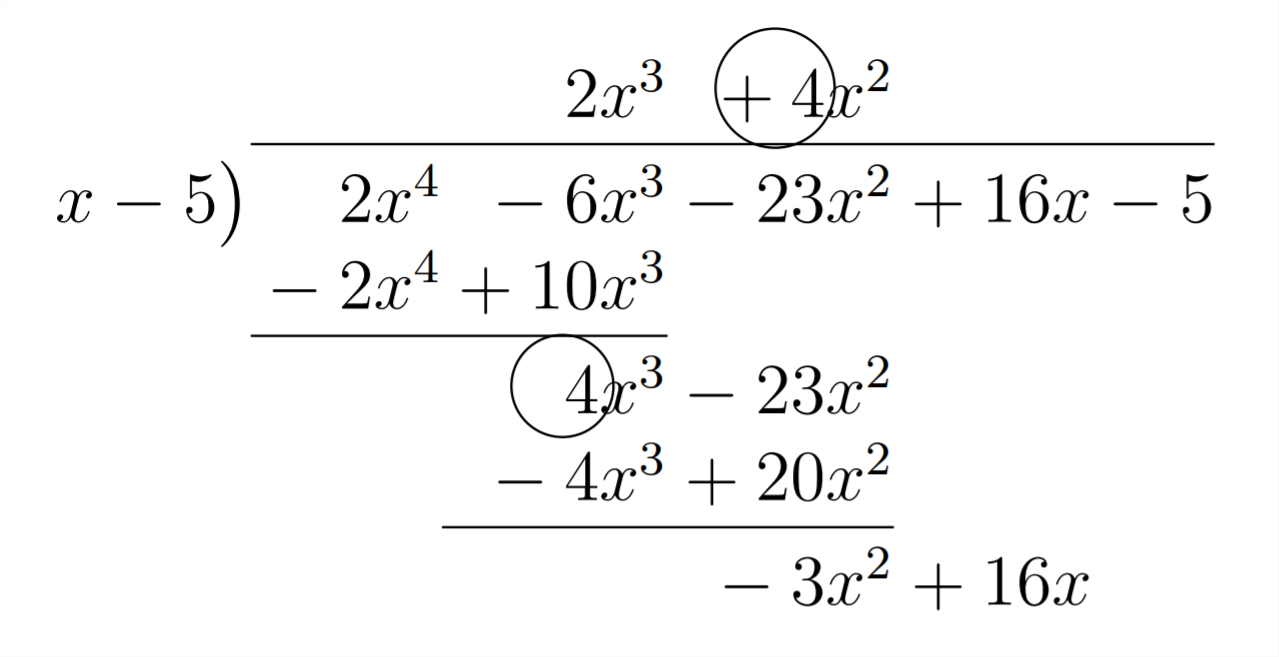
The next coefficient in the answer (4) comes from the combination of the -6 and the
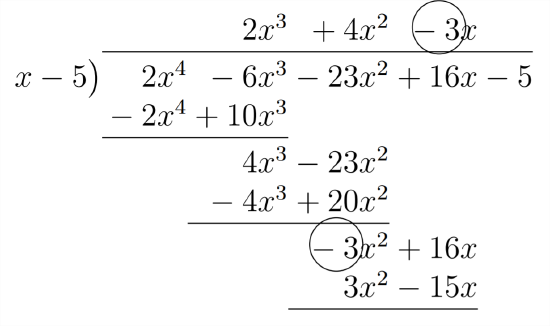
The last part of our answer will come from multiplying the -3 in the answer times the 5 in the divisor (making -15 ) and combining this with the +16 in the polynomial we're dividing into:

The process of Synthetic Division uses these relationships as a shortcut to finding the answer. The set-up for a Synthetic Division problem is shown below:
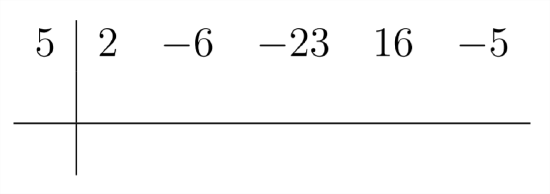
This set-up allows us to complete the division problem
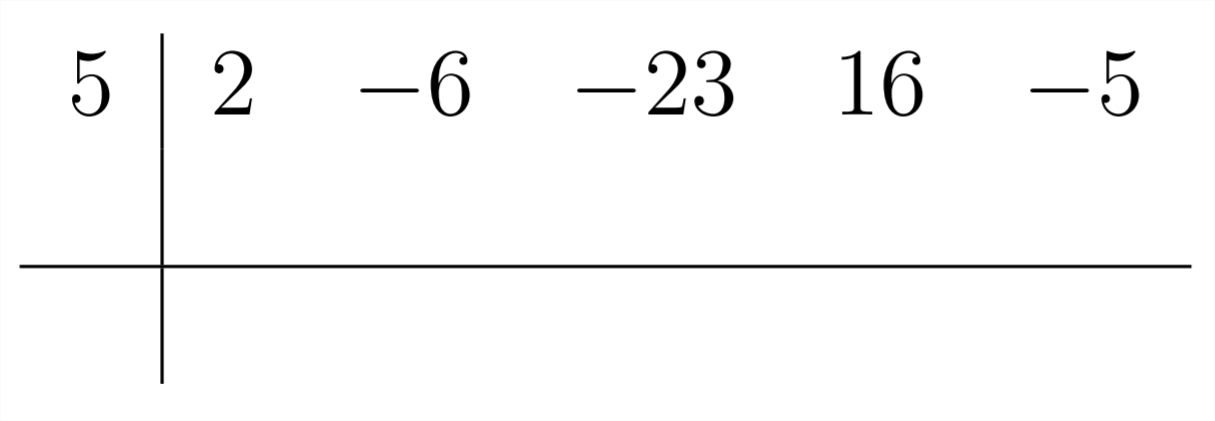
The first coefficient in the answer is the same as the first coefficient in the polynomial we're dividing into:

To get the next coefficient, we multiply the 2 by the 5 to get +10 and flll this in under the -6:

Then,

Then, we continue this process, multiplying the 4 by the 5 to get 20 and combining this with the

Next, multiply the -3 by the 5 and combine the resulting -15 with the 16:

In the last step, multiply the 1 times the 5 and combine the result with the -5 in the problem to get zero:

This last coefficient represents the remainder - in this case 0. The other numerals in the answer represent the coefficients for the powers of

Let's look at another example:
Example
Use Synthetic Division to divide:
since Synthetic Division is set up to divide by
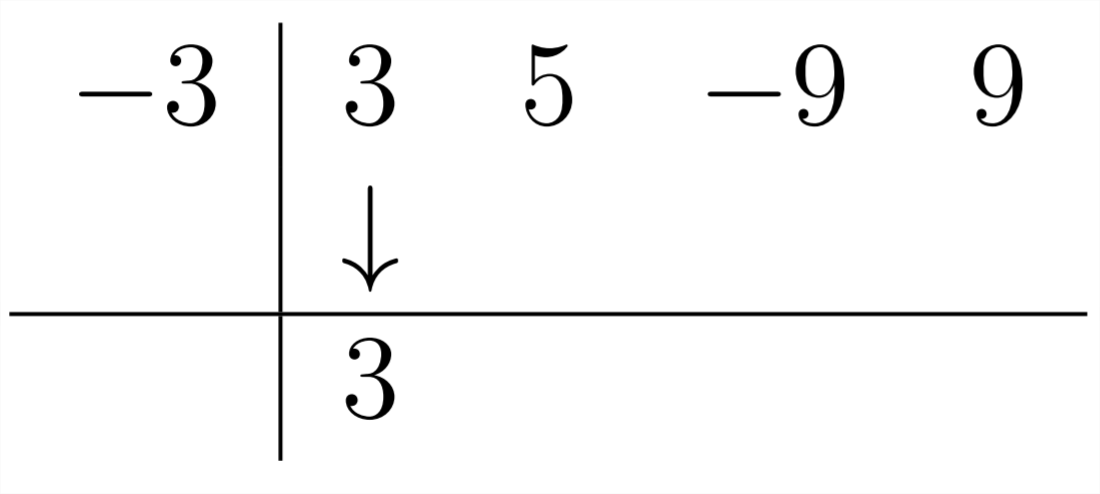
Then,
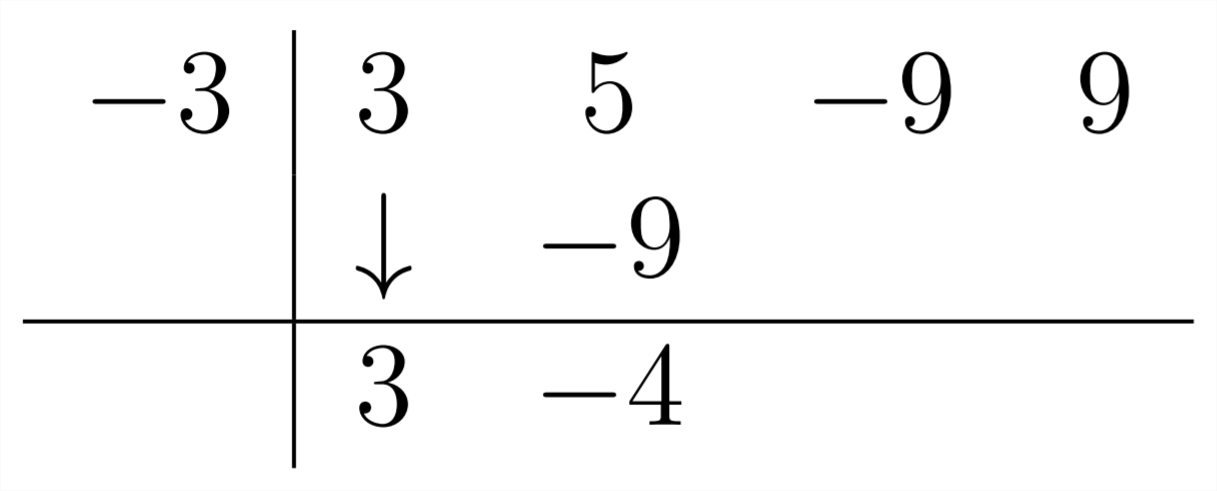
Next,
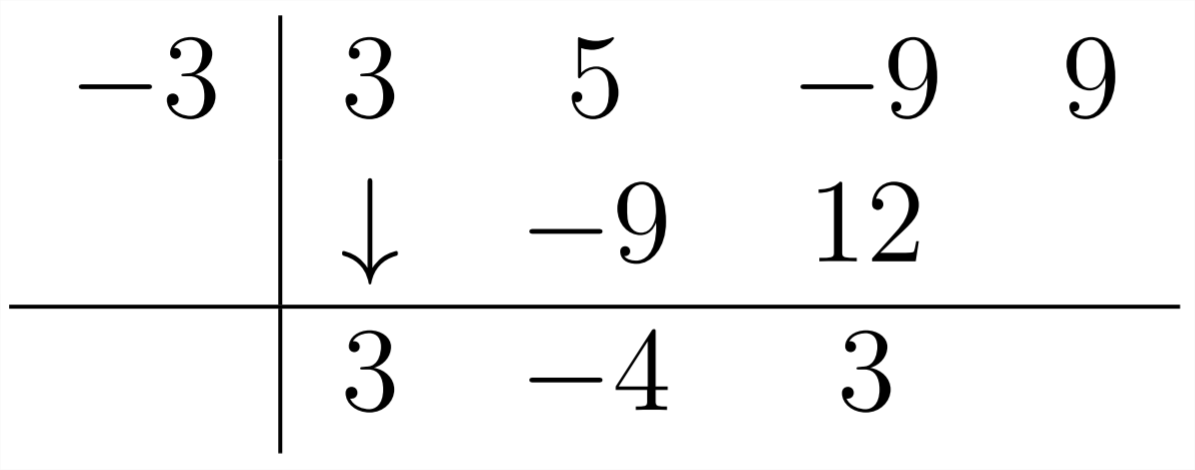
And this example also has a zero remainder:
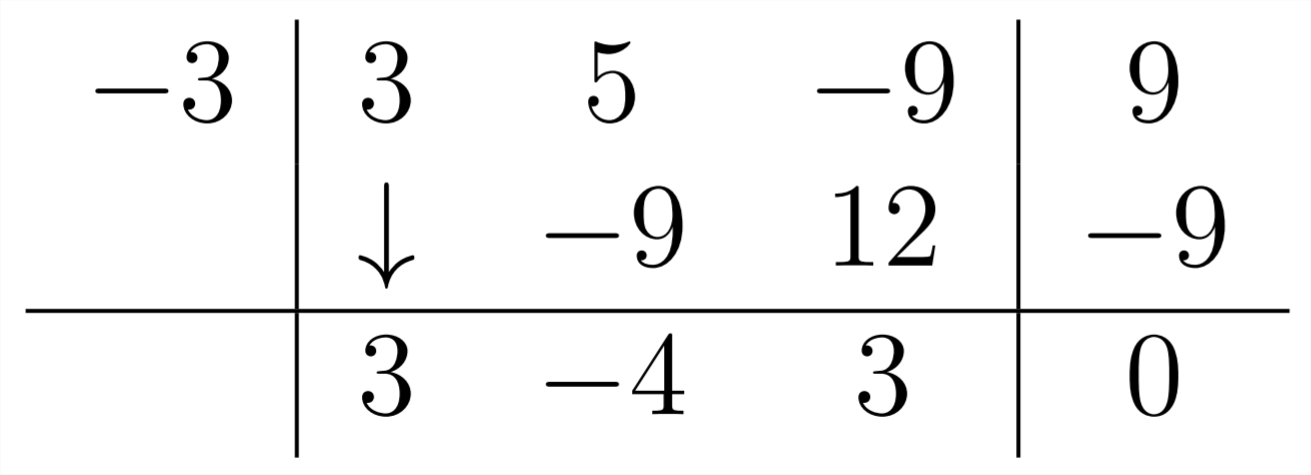
The answer here is
and
Let's look at an example that is a little bit different.
Example
Use Synthetic Division to divide:
Synthetic Division is set up to handle problems in which we are dividing by
+5. When we were dividing by
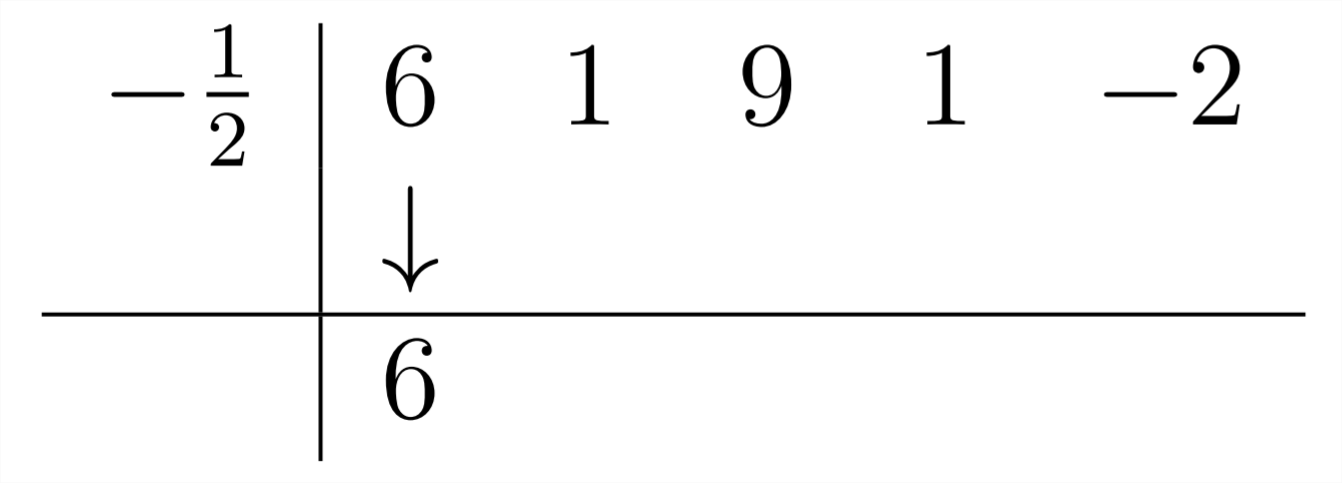
Then, we proceed as usual:

Notice that, again, we have a zero remainder. Also, notice that each coefficient in our answer has a common factor of
So, in the end, our work tells us that:
and
Notice that if we factor out the common factor of 2 from our answer, we can multiply it back into the
This means that:
Another thing to understand about Synthetic Division is that if there is a missing power of
Example
Use Synthetic Division to divide:
since there is no
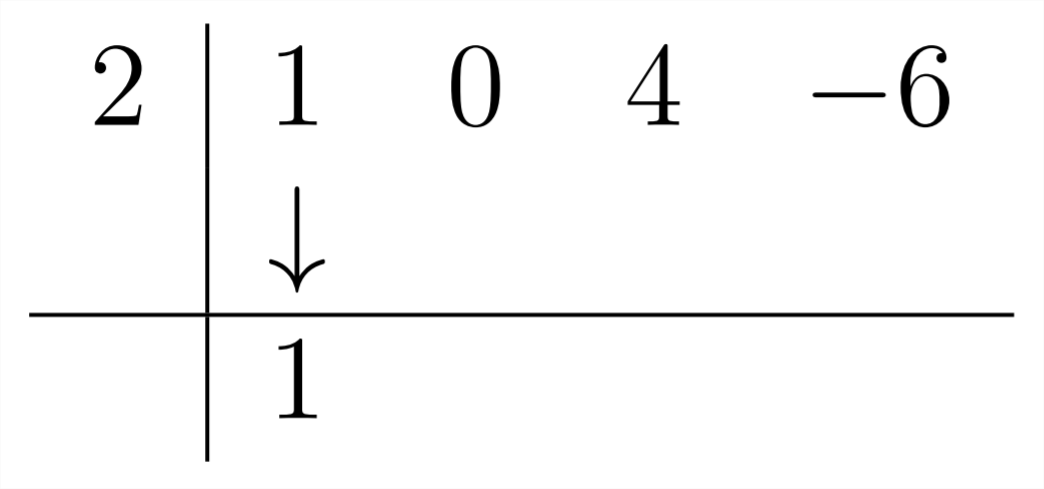
And then proceed as usual:

So the answer for this problem is
Exercises 2.7
Use synthetic division to find the quotient in each problem.
1)
2)
3)
4)
5)
6)
7)
8)
9)
10)
11)
12)
13)
14)

